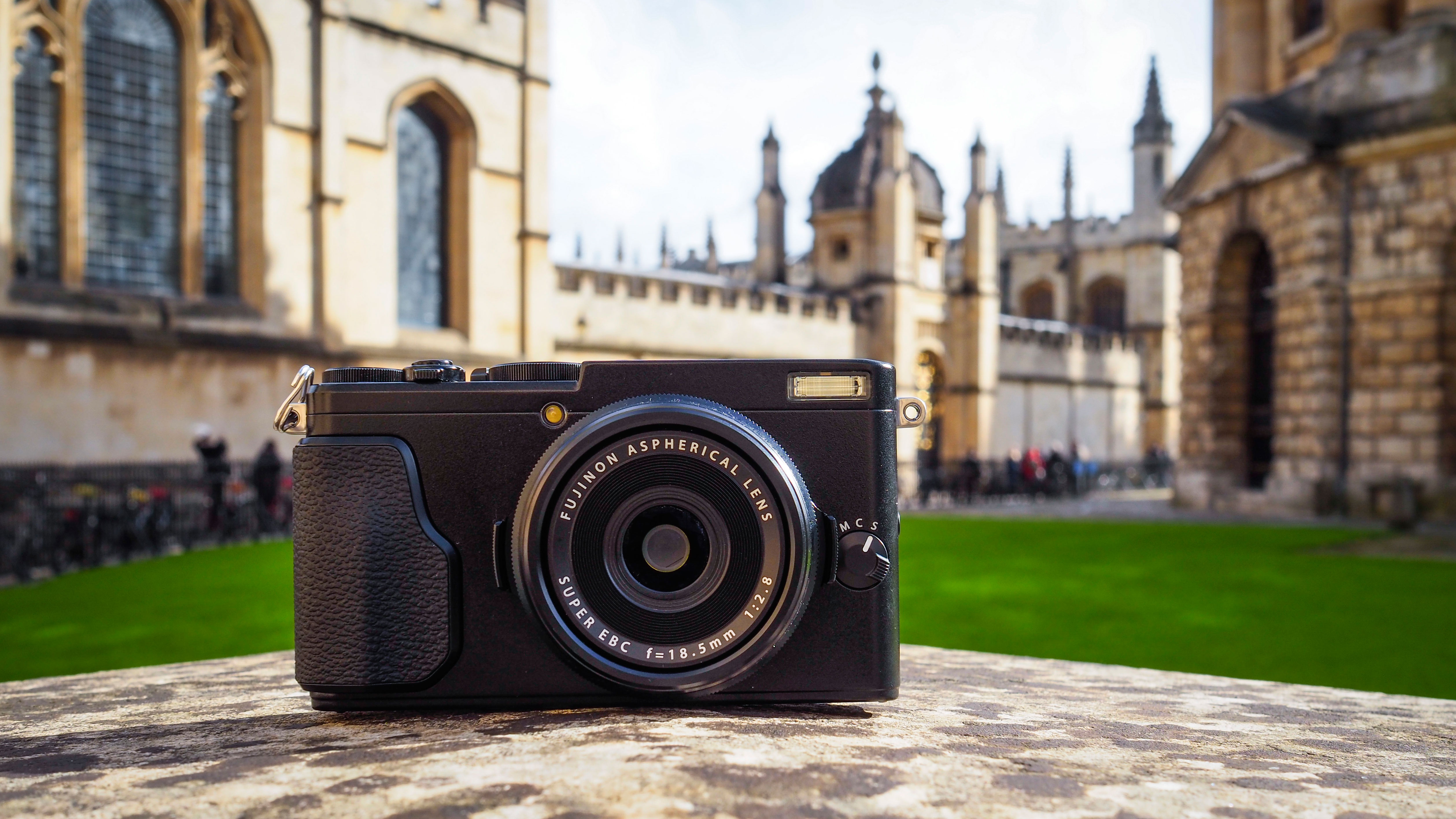Why you can trust TechRadar
Although Fuji's X10 and X20 compact cameras were popular, many people were disappointed that the X30's sensor was also 2/3-inch sized, especially as this camera's body is bigger than the X20's. And though it's been a little overshadowed by the Fuji X-Pro2 announced at the same time, there has been widespread approval for the X70's APS-C format sensor. This step up in sensor size ensures that the camera produces better images than Fuji's smallest X-series camera, on a par with those from the popular X100T. It also enables greater control over depth of field.
The larger X100T still offers the advantage of a viewfinder, and the more popular 35mm (equivalent) focal length. However, the tilting touch-sensitive screen makes it quicker to set AF point on the X70 while the 28mm focal length equivalent lens enables more successful group selfies.
In addition to the touch-screen, the X70 has a healthy collection of physical controls, traditional exposure controls and a fixed focal length f/2.8 lens – all of which will appeal to experienced photographers.

We liked
The X70's traditional exposure controls and solid build make it a delight to use, especially if you use aperture priority mode a lot because lens ring allows aperture to be adjusted so quickly and easily. The exposure compensation dial is also conveniently to hand for making exposure adjustments.
It's also good news that the Quick Menu, which is one of the best available because of its quick operation, is customisable. In addition there are 8 customisable function buttons that allow you to set-up the camera to your preferences.
We disliked
The two primary issues that could be of concern to enthusiast photographer are the lack of a viewfinder and the inability to record raw files when using the extended sensitivity options. As well as enabling a clearer view of a composition in bright light, I find using a viewfinder enables me to concentrate more easily on what I am shooting. The X70's screen provides a nice, detailed view and its brightness can be boost sufficiently for it to be used in bright sunlight (at least during March in the UK), but I still miss a viewfinder. I might miss it a little less if the X70's tilting screen was a vari-angle unit that is of use when shooting upright images at very low or high angles.
Adding a viewfinder would of course add cost as well as extra bulk to the X70, although Sony has managed to shoehorn a viewfinder into small cameras like the RX100 IV and RX1R II.
Sign up for breaking news, reviews, opinion, top tech deals, and more.
The inability to record raw files while using the extended sensitivity range is an issue with all Fuji X-series cameras and is clearly a case of company policy. Many photographers will probably avoid using the uppermost values where possible, but they could reasonably expect to have ISO 100 as a raw shooting option.
A final concern is the limited use of the touch-screen – it would be nice to be able to make settings changes with it.
Verdict
The X70 is the compact camera that Fuji X-series photographers have been longing for. It's small, well made, has traditional exposure controls and it produces the quality of images that they have come to expect. Its 28mm equivalent focal length offers a wider alternative to the 35mm of the X100T and it makes it a good alternative option for street and travel photography, especially when you want to keep size down.
It will be interesting to see where Fuji takes the X100-series of compacts. Will it become smaller yet retain the viewfinder or will the company wish to have greater differentiation between the two lines?
See also:
